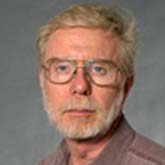
Peter Williams
Professor, Department of Chemistry and Biochemistry, College of Liberal Arts and Sciences
Department of Chemistry and Biochemistry
Arizona State University
PO Box 871604
Tempe, AZ 85287-1604
USA
Titles
- Professor, Department of Chemistry and Biochemistry, College of Liberal Arts and Sciences
Biography
Peter William's research group divides the material world into two parts-"rocks" and "goo" and develop and exploit novel analytical methods targeted to these disparate materials types. "Rocks" constitute the hard, mostly inorganic world of metals, semiconductors and minerals. Here the information needed is mostly elemental and/or isotopic composition, usually spatially resolved to within a few micrometers or less, and for this they utilize the technique of secondary ion mass spectrometry. Their interests lie in understanding the complex phenomena underlying secondary ion formation and in developing novel instrumentation, for example a novel electrometer array detector to determine the isotopic composition of oxygen in the sun, as reflected in solar wind samples from the Genesis satellite. Their workhorse instrument is a Cameca IMS 3f; they also use a Cameca IMS 6f and will add a time-of-flight SIMS instrument (TRIFT 1) in 2004.
The "goo" side of the world consists of biomolecules, e.g., proteins and DNA; here the analytical challenge is to obtain structural and/or sequence information that both identifies the molecules and rapidly detects potentially hazardous mutations. For proteins, they are developing new applications of matrix-assisted laser desorption/ionization (MALDI) time of flight mass spectrometry. For DNA they are developing a new approach to DNA sequencing. They use DNA polymerase together with single, fluorescently-labeled deoxyribonucleotide triphosphates (dNTPs) to probe the template sequences of a surface-immobilized array of DNA primer/template duplexes. The primers with appropriate template sequence are extended and those spots fluoresce. After destroying the fluorescent label the process is cyclically repeated with the four species of dNTP. The projected information rate is >10,000 bases/minute on an array of 10,000 or more DNA samples.
Education
- PhD, University of London, 1966

